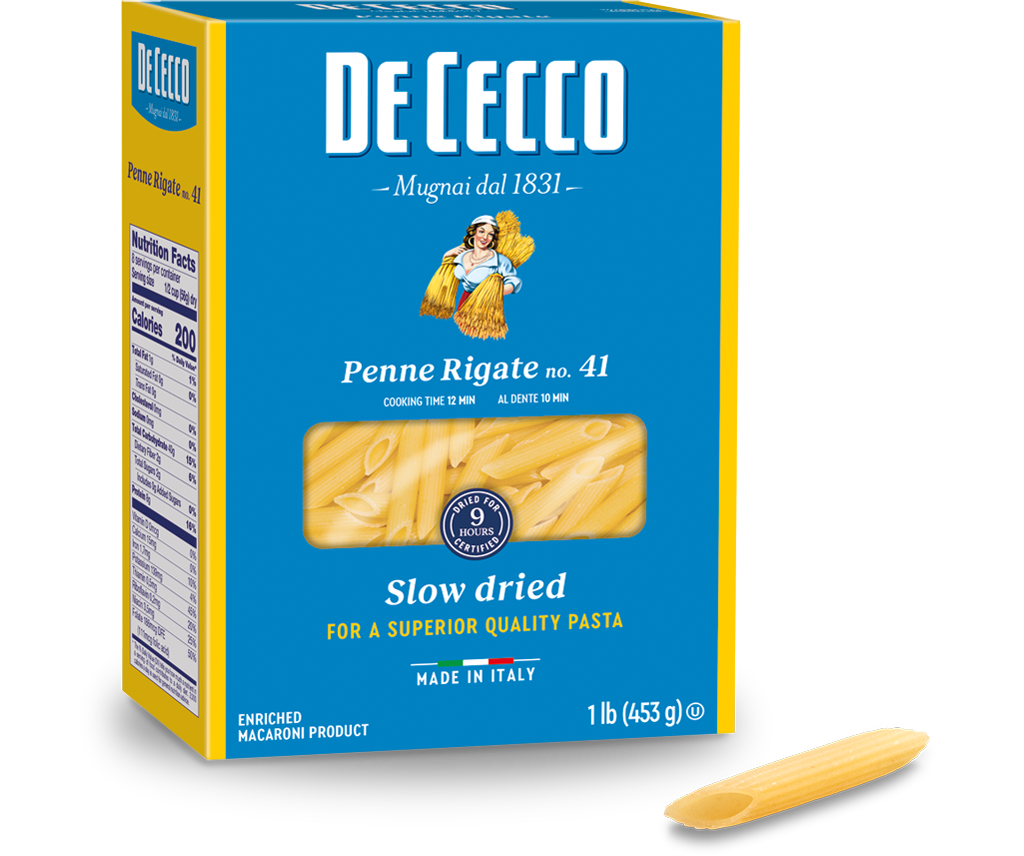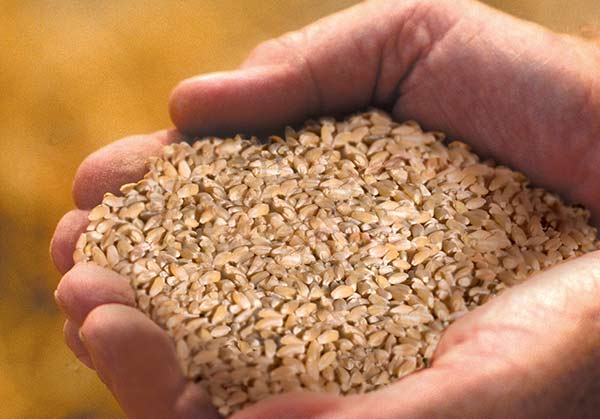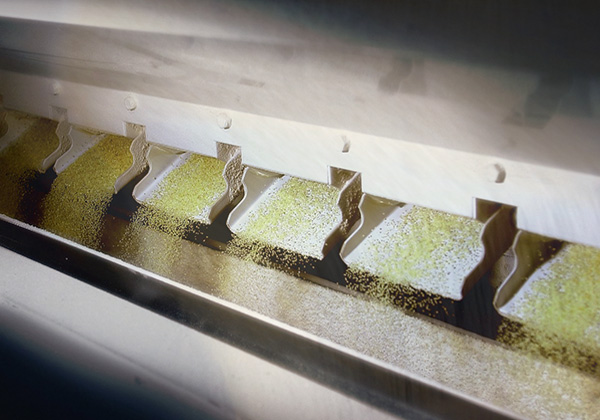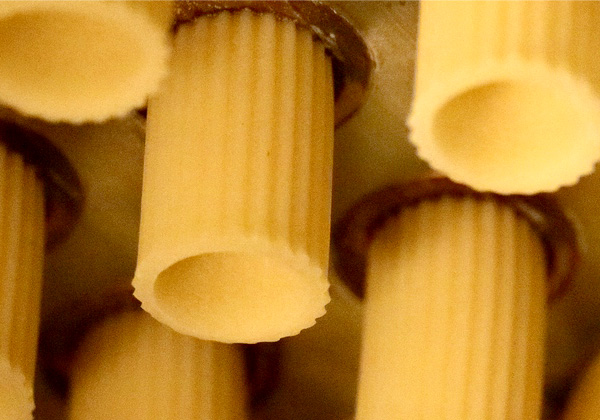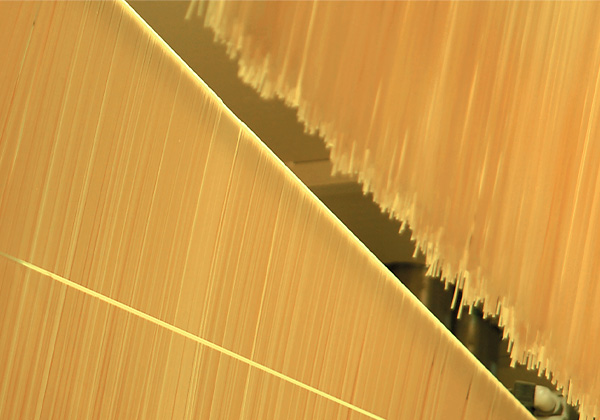Tortiglioni no. 23
Tortiglioni are one of many varieties of maccherone, one of the oldest types of pasta originating from Naples.
The name in Italian refers to the shape and comes from the Vulgar Latin tortillare which literally means to wrap in a spiral with a characteristic pattern from the lathe used in pasta production.
The shape is particularly versatile, but also very original, and best suited to full-bodied sauces.
Tortiglioni are excellent served with succulent, meat-based sauces. They are also very good served with tomato sauce or vegetable and tomato sauces. It is a particularly suitable type of pasta for oven-baked dishes.
Available in 16.0 oz and 5 lb pack.
- Cooking time: 11 min - Al dente: 9 min
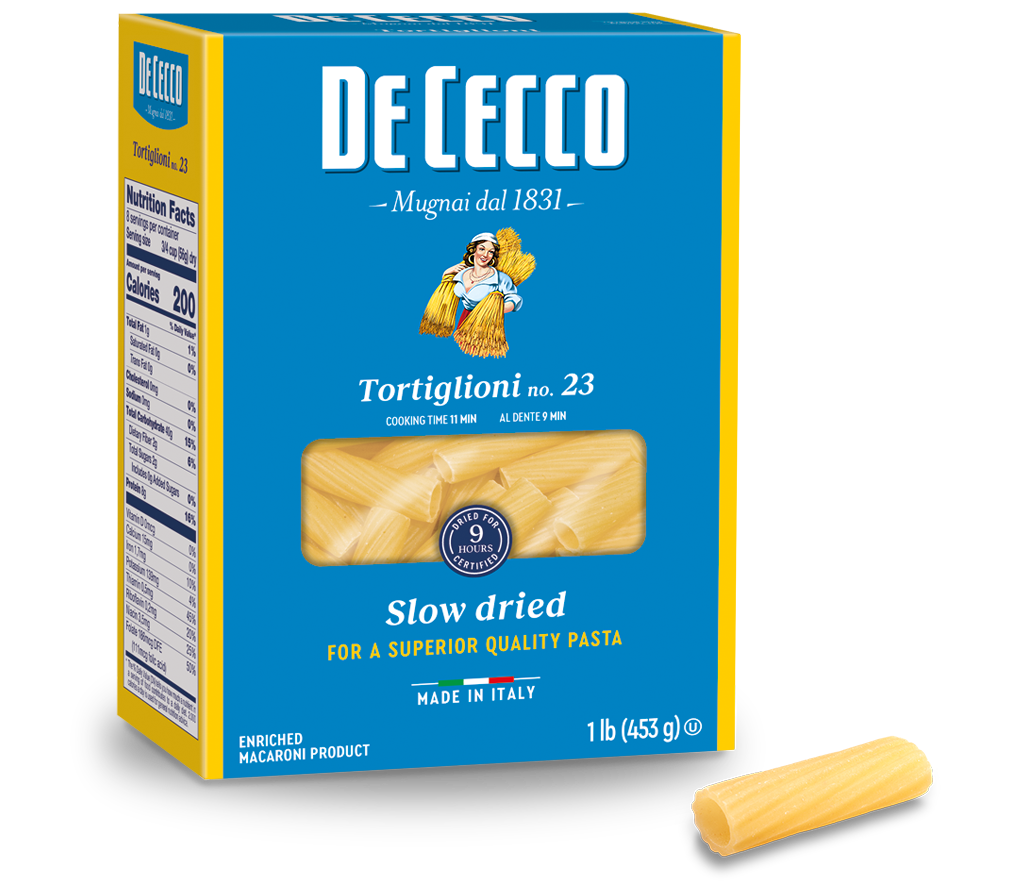
play
Our method
Attention, care, experience and quality during every phase: from our mill to your table.
You may also be interested in
Penne Rigate no. 41
Penne Rigate are part of the short, diagonal cut, ridged pasta family and are one of the most well-known type of pasta, as well as being the most versatile in the kitchen.
In Italian, the term "Penne" refers to the goose feather which was used historically to write with and was cut on a diagonal to achieve a really thin tip. The shape, obtained from a pasta tube, can be smooth or ridged, of varying length and has the typical diagonal cut of a quill.
Penne are one of the few types of pasta for which there is an exact date when it was created. Indeed, in 1865, a pasta-maker from San Martino d'Albaro (Genoa), Giovanni Battista Capurro, requested and obtained a patent for a diagonal cutting machine. The patent was important because it meant the fresh pasta could be cut like a quill without crushing it and in different lengths from 3 to 5 centimetres (mezze "half" penne or penne). The document preserved in the Central Archive of the State of Rome reads: "Up until now, a diagonal cut could only be made by hand with a pair of scissors which, in addition to being slow and time-consuming, also resulted in an irregular cut which flattened the pasta".
Penne Rigate are perfect for preparing oven-baked pasta or pasta dishes served with meat sauces made from pork or beef. This pasta is equally as good with vegetable based sauces and more in general, due to its versatility, for any recipe from the Mediterranean tradition, such as the classic condiment with tomato, basil, extra virgin olive oil and a sprinkling of parmesan. A classic combination is with Arrabbiata sauce.
Available in 16.0 oz and 5 lb.
Find out more
